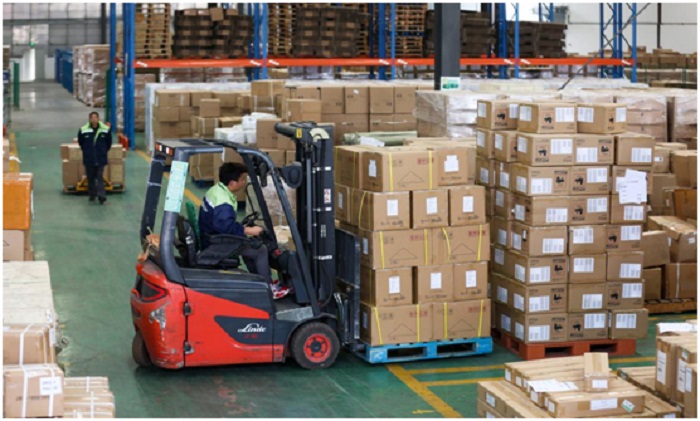



China’s cross-border e-commerce made new highs in 2020. According to customs statistics, the country’s cross-border e-commerce import and export volume surged 31.1 percent to 1.69 trillion yuan ($261 billion), and the total exports transacted on e-commerce platforms rose 40.1 percent to 1.12 trillion yuan.
“Our export volume through e-commerce channels reached 1.3 billion yuan last year, and is expected to hit 1.6 billion yuan in 2021,” said an executive from a foreign trade company in east China’s Zhejiang Province. The company joined cross-border e-commerce business in 2014, and started exporting commodities on cross-border e-commerce platforms four years later. It maintained a rapid annual growth of over 50 percent in recent years.
At present, as global consumers are resorting to online consumption, proactively or passively, cross-border e-commerce platforms rise as an important channel for consumers to purchase from.
Impacted by COVID-19, overseas consumers are seeing a surging demand for “made in China” products, including electronic products and daily necessities. According to customs statistics, China’s export of products related to “stay-at-home” economy, such as laptops, grew 8.2 percent to 2.51 trillion yuan last year.
The number of international flights dropped sharply after the pandemic, which posed serious threats for cross-border e-commerce, for example, delivery turning slow, cost going up and rising exchanges and returns. In addition, customs clearance was also a huge barrier.
Under such circumstances, the Chinese government issued a series of favorable policies. Last year, China enhanced cooperation with e-commerce businesses from 22 countries along the Silk Road, and the State Council approved the establishment of 46 integrated pilot zones for cross-border e-commerce, expanding the total number to 105.
Besides, the country also added “9710” and “9810” trade methods, which refer to either direct export of goods from domestic businesses to overseas businesses by cross-border logistics based on their mutual deals over a cross-border e-commerce platform, or the export of goods by a domestic company to its overseas warehouse, from which the goods will be delivered to overseas buyers based on their deals over a cross-border e-commerce platform.
Currently, favorable policies to facilitate multiple industrial chains, including cross-border payment, e-commerce platforms and logistics are being rolled out in many integrated pilot zones for cross-border e-commerce across China.
The COVID-19 pandemic accelerated the digitalization of the foreign trade sector, and technological innovation is empowering export. For instance, online exhibitions, audio and video conferences, as well as smart translation, customs declaration, logistics and tax rebate services have been launched by Alibaba.com under Chinese e-commerce giant Alibaba to bring closer buyers and sellers from different countries.
“We must ensure that we on one hand help businesses precisely grab orders, and on the other hand maintain smooth operation of international shipping, cross-border payment and other links,” said Zhang Kuo, Alibaba.com’s general manager.
The constant development of cross-border e-commerce is sending more and more Chinese commodities to overseas destinations and upgrading the demand of global consumers.
Amazon recently issued a report summarizing the development of China’s cross-border e-commerce in the past year. It said the business is going towards the following five trends in China: more diverse locations and types of sellers, accelerated global deployment, enhanced awareness of branding, speeded innovation and upgraded responding capability.
China’s cross-border e-commerce and sellers have turned from extensive development to intensive growth, said Cindy Tai, Head of Amazon Global Selling Asia. She said the sector is a pillar of China’s foreign trade, and is growing into a new normal from a new business.


The Humanitarian Service Diamond Awards has.
A Chinese Company, Inner Galaxy Steel.


The Programme Coordinator, Regulatory, Compliance and.


A Non-Governmental Organization (NGO), Committee for.
The Trustfund Pensions Limited has chided.


The House of Representatives Committee on.
The China General Chamber of Commerce.


Senator Chuka Utazi who represented Enugu.


An Abuja based Legal Practitioner, Ugochukwu.


The African business community in Yiwu,.
Leave a Comment